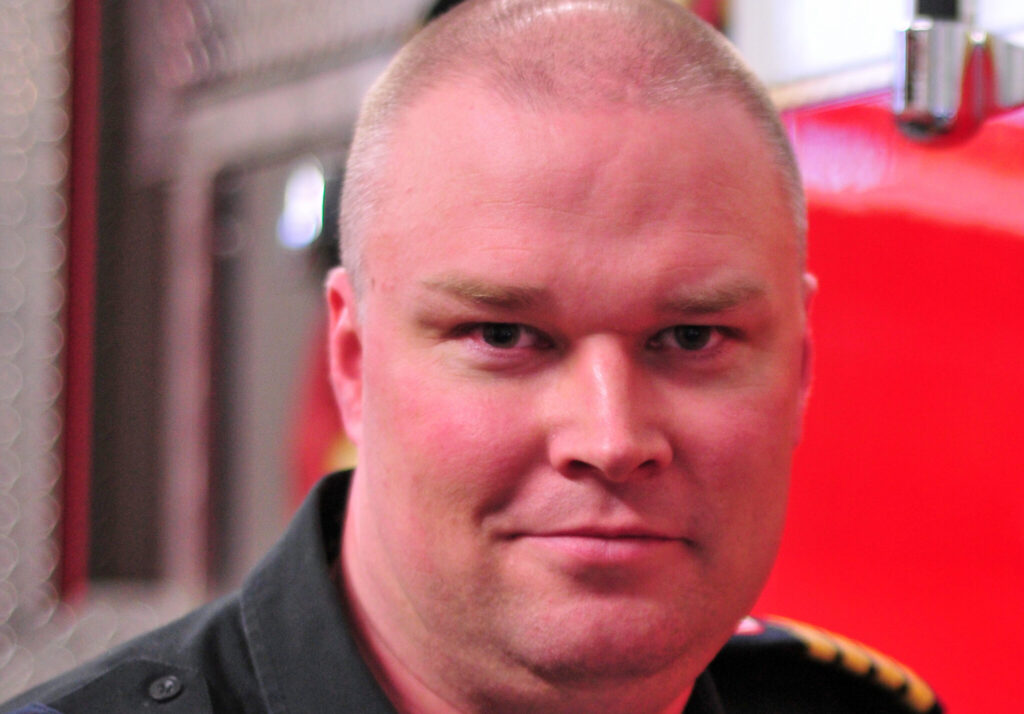
From Hire to Retire: Wearable technology: Revolutionizing firefighter health and well-being
By Arjuna George
Features Training Week firefighter training firefighters First Responders training Arjuna George
Arjuna George The firefighting profession is physically and mentally challenging, pushing individuals to their limits in ways the average person cannot comprehend. However, the recent rise of wearable technology offers promising solutions for enhancing firefighter health and wellness. Professional athletes have been utilizing this technology to hack their performance levels, and as industrial athletes (firefighters), we can do the same.
Increasing activity through wearable tech
One way wearable technology benefits firefighters is by tracking physical activity. Such devices encourage users to remain active by providing detailed information on various exercise aspects, including calories burned, steps taken, and workout duration. Access to these metrics motivates firefighters and enables them to adjust their training programs accordingly.
Improving sleep quality
Sleep is crucial for optimal health and performance, but irregular shifts and adrenaline-fuelled nights can disrupt a firefighter’s sleep patterns. Wearable technology offers advanced sleep-tracking capabilities, monitoring the quality and length of sleep. Not only do they track the hours of sleep, but they can also provide detailed data on the types of sleep, such as your REM and deep sleep cycles. This invaluable data helps firefighters understand their sleep habits and make necessary adjustments to ensure they are well-rested and alert for their duties.
Monitoring vital signs and exertion
Another essential aspect of wellness is monitoring vital signs and exertion levels. Wearable technology has made significant progress in this area, enabling firefighters to keep track of their body temperature. Many devices can also track your respiration rate and blood oxygen levels during high-impact activities.
Understanding Heart Rate Variability (HRV)
Wearable devices can also measure heart rate and heart rate variability (HRV), offering insights into cardiovascular stress and recovery status. HRV refers to the variation in time intervals between consecutive heartbeats. Instead of counting heartbeats per minute, HRV measures the specific changes in time between successive heartbeats.
A higher HRV indicates a healthy, resilient heart capable of adapting to various situations. It reflects a robust autonomic nervous system and balance between the sympathetic (fight or flight) and parasympathetic (rest and digest) branches. Conversely, a lower HRV can signal stress, fatigue, or potential health problems, suggesting that the body may struggle to adapt to external demands.
With continuous feedback from wearable devices, firefighters can tailor their training programs and recovery routines to ensure they are always at their best and prepared to serve. It’s like having a health coach on your wrist.
Addressing mental and emotional stress
Firefighters face considerable mental and emotional stress in their line of work. Some wearable devices can detect physiological stress signs and provide you with health insights that we may have undetected. This technology helps dismantle mental health stigma, promoting a culture of open dialogue and support within the firefighting community.
Reducing long-term health risks
Firefighters often face long-term health risks from exposure to toxic substances and smoke. As wearable technology evolves, it is expected to raise awareness about these hazards, potentially reducing health issues like cancer.
Combat ready
Several devices provide users with a daily “readiness score,” which can be vital information for firefighters at the start of their shift but also the end. The readiness scores consider the multiple data points from sleep, body temperature, exercise, blood oxygen levels, resting pulse and HRV. I have found this feature of wearable tech to be one of the most valuable aspects of improving my well-being. Before I start my day, I review my score, which paints a vivid picture of my overall wellness. A poor score might tell me I need a rest day, early signs of a cold starting, or more recovery time from the previous day’s training activities. A high score shows my body is ready to take on the day and be active. Most tend to ignore warning signs that the body or nervous system needs additional support; with these devices, we can be more aware of our body and its current state of well-being.
Numerous devices are on the market now; you should explore which ones may fit your needs best and start tracking your wellness. The more we know our bodies and how they react under stress and exertion, the healthier we will be.
The advent of wearable technology has provided firefighters with invaluable tools to understand their limitations better and, more importantly, enhance their overall well-being. With these innovations, the future looks promising for a healthier, more resilient firefighting workforce prepared to confront any challenges that may arise.
Arjuna George retired as a fire chief in November of 2021 after serving the department in Salt Spring Island, B.C., since 1997. He is now a fire service coach and consultant. Visit silverarrowco.com or email arjuna@silverarrowco.com.
Print this page